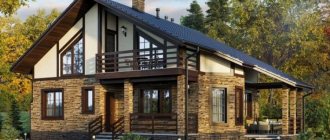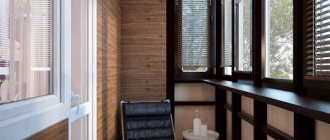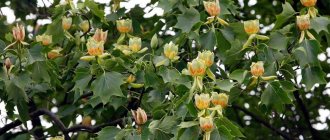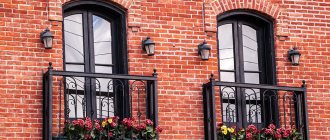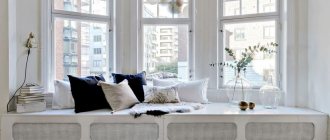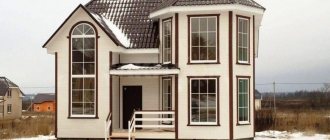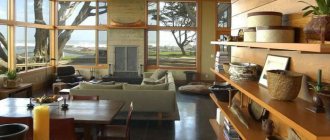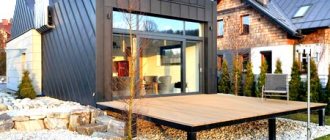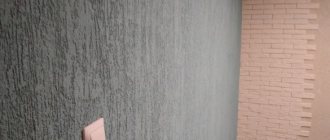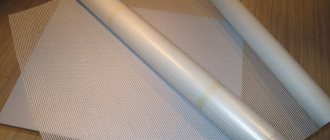Balcony finishing options
Finishing the inside of a balcony with your own hands involves, first of all, a competent choice of materials and comprehensive insulation of the structure. It is noteworthy that it is not difficult to do such work on your own, even without the relevant experience.
By the way, if you want to insulate a balcony or loggia, then use the insulation instructions, a guide in 6 stages. There is also a large selection of facade finishing options here.
The most popular materials for interior cladding of balconies include:
- lining made of wood or plastic;
- PVC panels;
- laminate;
- MDF sheets;
- other materials.
The interior decoration of the balcony with wooden paneling allows you to end up with a stylish and cozy space for relaxation. This is an environmentally safe material, excellent for durable cladding. The advantages of lining include the ease of working with it, as well as wide possibilities for decoration by painting or highlighting the texture of natural wood.
The disadvantages of the material rightly include its ability to collapse under the influence of external factors. To protect wood, it is necessary to use special impregnating compounds.
Economical and durable options for finishing balconies include plastic panels. They are durable, resistant to moisture and ultraviolet radiation, and safe for health. Finishing the balcony with plastic panels allows you to hide serious defects in the surface of the walls and ceiling.
Often, chipboards are used to decorate a loggia or balcony. MDF has all the advantages of wooden lining, serves as an excellent means of heat and sound insulation, and has a budget price. The disadvantage of this decor is its relative fragility due to the low density of the panels. They do not tolerate mechanical stress well and quickly collapse under heavy load.
You should know that the electrical wiring in this case must be placed in a corrugated pipe for safety. MDF panels have a spectacular appearance, which allows you to create an original interior. It is easy to verify this by studying the photo of finishing the inside of the balcony using these materials.
Main conclusions
We talked to you about the best way to cover the inside of a loggia or balcony, as well as what materials should be given preference.
In the list of materials for sheathing, I did not mention laminated MDF panels. The material is affordable and of good quality, but does not like high humidity. This can cause it to swell and bulge. But this is the case when the panels actually become damp for some reason. Well, for example, when the window frames are not installed very well and when it rains, water gets inside.
If this is unlikely to happen, then it is quite possible to use such material.
I wish you the right choice and excellent results!
Best regards, Alexander Tkachenko.
Decoration Materials
Even if the balcony is planned to be used for storing some things and drying laundry, it must be dry, warm, and have an aesthetic appearance. A competent choice of materials for finishing the balcony inside and carrying out the necessary insulation and landscaping work will help solve this problem.
When choosing insulation and balcony covering options, it is important to take into account several important factors. These include the type of building, the quality of the wall surface, the design and the final functional purpose of the balcony.
Note!
Laying quartz vinyl tiles with your own hands step by step: instructions, subtleties, methods, features, installation, “Click-Drop”
- Suspended ceiling Armstrong (125 photos): device, plate sizes, types, installation, calculation and installation
- Textured paint for walls: types, how to apply it yourself, instructions, composition, varieties, photos of new designs
It is recommended to use moisture-resistant plasterboard slabs where it is necessary to hide old walls with an uneven surface. The slabs are perfect as a basis for further decorative finishing.
Working with this material is simple; the slabs are attached using the dry method to a pre-prepared sheathing. The result is a smooth surface that requires virtually no finishing. It is easy to cover the slabs with a textured decorative film or paint them.
When planning to use a balcony as an additional living space, it must be properly insulated. The following are most often used for this:
- mineral wool;
- penofol;
- Styrofoam.
Building materials used for finishing balconies and loggias inside must meet certain technical requirements. In particular, they must be:
- safe for human health and pets;
- have a low thermal conductivity;
- be resistant to moisture and sun rays;
- have a long service life without loss of basic consumer qualities.
Interior design experts recommend decorating loggias and balconies in natural colors. It is appropriate to use dark shades for floor coverings, and walls are often decorated with materials that can reflect the rays of the sun.
Note!
Choosing a heated floor: water, infrared, film, rod, cable, resistive, self-regulating, pros and cons + instructions
- Kitchen renovation in Khrushchev (155 real photos): new designs, layout options, furniture placement and zoning of a small kitchen
- Decorative plaster: types for interior wall decoration, design photos, instructions for application and combination in the interior
Block house classification
The block house is divided into several classes according to the quality of wood, and also differs in size. The price of the material directly depends on these parameters.
Depending on the size, the block house can be:
- Thickness: 1.5-5 centimeters;
- Width: 8-10 centimeters for panels for interior decoration, or 13-23 centimeters for exterior;
- Length: 2-6 meters.
Now let's look at the classification of block house by quality of execution:
- Class "C" panels. For their manufacture, poorly processed wood is used, on which knots, dark spots, cracks, burrs, etc. can be found;
- Class "B" panels. There are much fewer defects and damage on the front side of such panels;
- Class "A" panels. They are made from high-quality processed wood, but you can notice darker areas from knots on them;
- Class "E" panels. They are also called extra-class panels, since such wood does not contain defects, it is perfectly processed and has an even, clean color.
It is preferable to use a block house of the last two classes for interior decoration, since it looks more aesthetically pleasing. But such panels are more expensive.
Work order
Major repairs of a balcony or loggia require a certain sequence of work.
Their list includes:
- preparation of floor, wall and ceiling surfaces;
- insulation;
- wall and ceiling cladding;
- flooring;
- decorative design.
As a result, not only does the appearance of the balcony improve, but also its technical performance in terms of temperature and air humidity improves.
More detailed finishing work depends on the degree of insulation and the type of materials chosen. Many design options will require the construction of a base frame, and floor repairs require a base made of durable timber.
Causes of condensation
Condensation is the transition of a substance from a gaseous to a liquid state. In this case, we are talking about water vapor, which is always present in the air in one quantity or another. At a certain ratio of air humidity and temperature (when it decreases), condensation occurs in the form of dew drops. The higher the humidity, the higher the dew point.
When a balcony is glazed for the purpose of insulating it, especially with the help of metal-plastic windows, the ventilation of this room is disrupted, which can lead to an increase in humidity.
Additional factors may include drying laundry or placing flowers that are watered regularly. During the cold season, surfaces in contact with the street cool down. Water droplets form at the interface between moist air and cold surface. As a rule, dew forms on glass, external walls or ceilings.
Eurolining and lining
These are the most traditional materials for decorating the interior space of a balcony or loggia. Lining and eurolining are materials that are safe for health and easy to work with. The design features of wooden elements make it possible to ultimately obtain an almost seamless surface. Eurolining is equipped with additional channels for natural ventilation, which allows you to extend the life of the material.
The natural texture of natural wood allows you to get a pleasant and cozy interior. The owner independently decides how to sheathe the inside of the balcony. Finishing details are easy to place both horizontally and vertically. In this case, it is imperative to prepare a sheathing made of a metal profile or wooden beam. The guide battens are placed perpendicular to the sheathing parts.
Note!
- How to update the tiles in the bathroom without changing them or removing them: step-by-step instructions, stickers, painting, decor (140 photos)
Do-it-yourself Venetian plaster walls: types, application instructions, photos of beautiful wall decoration, colors
How to unclog a toilet if it’s clogged: step-by-step instructions, a review of the most effective methods for removing a blockage with your own hands
If desired, it is easy to pre-insulate the room.
Wooden lining, like its more advanced analogue, must be treated with protective solutions against rot, mold, and also with a fire retardant. After drying, the finishing elements are sequentially attached to the sheathing, carefully aligning with each other at the seams.
The finishing touch will be varnishing or painting. This is necessary not only to give a more aesthetic appearance, but also to protect against moisture, dust and fungus.
Loggia as a continuation of the apartment
If the size of the balcony allows, you can make it a separate room or remove the partition and combine the space with the adjacent territory.
Kitchens with a combined loggia
Ideas for combining a kitchen and loggia for small apartments - here you will find ideas for creating a bright, functional, comfortable and modern interior design in small spaces.
You can choose dark and light, rich and muted colors. It all depends on your preferences and design style. The main condition is a harmonious combination of colors.
Cozy bedrooms with a combined loggia
The combination of a bedroom with a loggia requires calm, peaceful, light and neutral colors. Soft whites and light grays, pale greens and blues are ideal. Warm yellow, orange, peach, pink and red colors can be used as bright accents.
Wardrobe
To save space in your apartment, you can turn your balcony into a dressing room instead of installing a large closet.
Remember that if you constantly expose your clothes to the sun, they will fade over time. Therefore, the shelves and lintels on which your clothes will be placed must be covered with a door or screen.
Cabinet
For those who work on a computer at home, the loggia can be turned into an office. You don't need a lot of space to place a table and other equipment. In addition, thanks to the large number of windows, it is always bright here.
You can order a ready-made table or install a custom-made tabletop with the required dimensions.
If the balcony is connected to a room, you can set up a work area in a recess on the side.
Living rooms with a combined loggia
Living rooms in light colors combined with a balcony look more spacious and elegant. Natural decor and finishing, portable bio-fireplaces, small fountains, cozy lamps and pots with flowering and green plants create a wonderful space for entertaining guests.
Compact furniture, ergonomic layout and creative division of rooms combined with bright lighting are great ideas for modern room design with a built-in loggia and for decorating small apartments and houses.
PVC panels
Plastic panels for finishing the balcony inside give the structure a laconic look and harmonize perfectly with metal glazing.
The advantages of the material include:
- high hygiene;
- long service life;
- weather resistance;
- ease of installation.
The panels are mounted on the sheathing, carefully adjusting at the joints. For a cold balcony, it is recommended to use narrow panels (25 cm); they better withstand temperature changes.
A wide range of PVC panels allows you to create a stylish balcony design without major investments. The panels do not require additional protective treatment; the installation procedure is simple and does not require much time.
Laminate has similar technical indicators. It is often used to decorate walls and flooring. The process of finishing a balcony with laminate is no different from working with PVC panels.
What is imitation timber?
The block house is a special type of lining. This is a planed board for cladding with special tongue-and-groove joints. The front part of such a board has a round shape, as if repeating natural logs. Thus, walls covered with this material resemble timber trim.
On the back side of the board there are ventilation grooves designed to ensure air exchange. The gutters running along it make it possible to reduce the load, so that the wood does not crack or sag.
Imitation timber has special edges. On one side of this edge there is a special tenon, on the other there is a groove. These structural elements are used to connect the boards. At the same time, the height of the tenon is slightly less than the depth of the groove, this ensures good joining of the sheathing elements, and also does not allow the boards to warp during seasonal temperature changes.
During the production of a blockhouse, the wood is well dried. This allows you to significantly reduce the weight of raw materials and use it for finishing loggias and garages.
Cork panels
At the preparatory stage, when deciding how to decorate the walls on the balcony, it makes sense to pay attention to cork panels. This is a material of natural origin, the production of which uses cork oak bark.
The advantages of this finish include:
- environmental friendliness;
- ease of processing;
- fire safety;
- moisture-repellent coating.
The panels are attached to flat walls using special glue. If the surface of the walls cannot be leveled, then use plasterboard. The use of plasterboard as a base allows for additional insulation, since the plasterboard sheets are fixed to the sheathing.
You should know that the glue intended for fixing the panels hardens very quickly. For this reason, the panels must be fastened carefully; there will be no opportunity to further align them.
Why does condensation appear?
The appearance of condensation on the balcony is due to physical processes. Warm air has a fairly high moisture capacity. It contains water vapor in fairly large quantities. When the air from the apartment enters the balcony, it comes into contact with cool surfaces, cools down, and its ability to hold water vapor decreases. As a result, excess moisture settles on surfaces.
Most often, condensation forms on window glass, because... They are the coldest surfaces. But if the balcony is not insulated enough, then the walls, furniture and other structures turn out to be cold. Moisture also settles on these surfaces.
Rice. 2 The reason for the appearance of condensation on the loggia
Decorative rock
Artificial stone is a type of ceramic tile. Its performance characteristics are designed for temperature changes and high humidity, so finishing the balcony with stone is considered a rational solution.
The advantages of this material include:
- high laying speed;
- no need for thorough surface preparation;
- fire safety;
- long service life;
- mechanical and chemical resistance;
- variety of textures.
The material will not require careful surface preparation, since the cladding is similar to laying tiles. For a limited balcony space, light shades of imitation natural stone are appropriate.
Wood boards
Fiberboards and particle boards are used for finishing heated balconies, as they react poorly to high humidity - they can warp, change structure and swell. This can be said about all boards made from sawdust or shavings: MDF, chipboard, hard fiberboard, OSB.
Ceramic tile
In terms of practicality and durability, the ideal material for decorating a loggia or balcony is ceramic tiles. If installed correctly, the service life of this “cladding” will be a long period of time. The material does not absorb moisture, does not fade, and is easy to wash.
Ceramic casting, thanks to a wide selection of shapes, colors and textures, will allow you to bring any design idea to life.
Siding
For balconies without glazing, covering the walls with siding would be a reasonable finishing option. The technology of attaching the material to the lathing makes it possible to additionally insulate the walls.
Working with siding is easy; no special expensive tools are needed. The material is designed for use in open air conditions, therefore it is resistant to any aggressive atmospheric influences.
Balcony with wardrobes
Placing cabinets on the balcony allows you to create an additional storage system. Lockers of various designs, both hanging and floor-standing models, can be placed on the balcony. A built-in closet or a compact vertical pencil case will be convenient.
When choosing a cabinet or materials for making it yourself, it is important to take into account special operating conditions (humidity, possible temperature changes).
Decorating the inside of a balcony with cabinets requires advance planning. This will allow you to create a harmonious and functional interior in a limited space. A convenient storage system will allow you to maintain order not only on the balcony, but throughout the apartment.
When planning to decorate a balcony, you should know that most finishing materials are very easy to use. This will allow novice craftsmen without prior experience in such work to insulate and equip a balcony on their own.
Fashion trends
Eclecticism wins the battle with the principle of consistent style, so the balcony can be a good arena for experimentation.
Large double-glazed windows providing maximum transparency and stylish bins with a small window: any configuration is acceptable.
In the first case, access to daylight, originally included in the layout, increases; in the second, spatial gain will be obtained for the placement of furniture.
An enclosed balcony intended for relaxation, which is usually equipped with non-bulky upholstered furniture and a table, can carry any style – from strict minimalism to a corner decorated in an exotic ethnic style. It can also become a separate eco-style greenhouse.
Built-in wardrobes are well installed in niches and mezzanines, the ends of which become a fragmented part of the fragmentary cladding of the balcony.
Eclecticism allows you to use up to 3 types of finishes on its small footage, which allows you to differentiate the level of insulation of the parapet under the window, external walls and internal partition.
